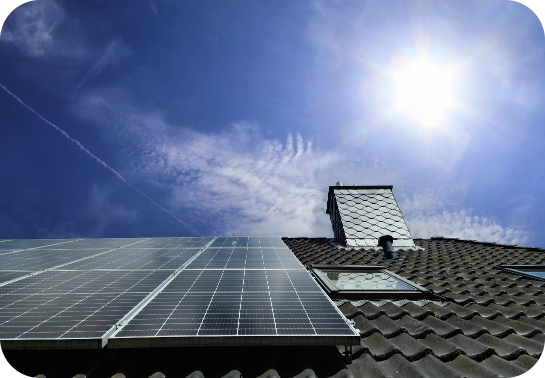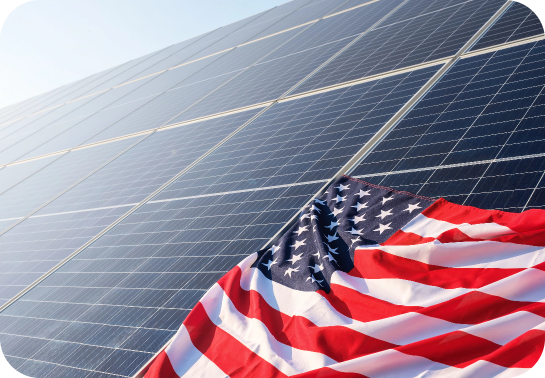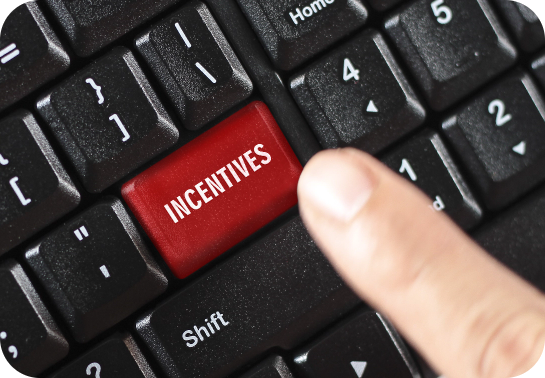Is ‘No-Cost Solar’ Actually No-Cost in 2024?

As sustainable energy becomes more feasible and reliable, residential solar energy is becoming a reality for more and more homeowners. This is a major win, not just for the environment but also for many homeowners’ energy independence. However, as more homeowners turn to solar energy, it becomes more prevalent to see advertisements that promote “no-cost solar” installations or extreme promises that purport to show homeowners how to get solar panels for free. This sounds like an amazing deal, but what does no-cost solar really mean for a homeowner? Today, let’s look at what these ads really mean and see how Axia helps you flip the switch to renewable, clean energy.
What Does ‘No-Cost Solar’ Actually Mean?
The term “no-cost solar” can be misleading. It’s often used by marketers to get the attention of homeowners with the prospect of an incredible deal, but the reality of it is fairly different. When these advertisements say “no-cost solar,” what they are really referring to is “no upfront cost solar,” which means that the solar panels and installation have been financed through loans or leases, so the homeowner doesn’t have to pay at the time of installation. Though having no upfront cost can be useful in this situation, the cost for solar for the homeowner is not zero but spread out over time.

How Does the No-Cost Solar Program Work?
It’s very important for homeowners to know that a free solar installation is rare, and advertisements claiming they know how to get free solar panels are making a big promise that they likely can’t deliver. Even though government programs exist to help homeowners with the cost of a solar installation, most homeowners will have to make a financial commitment of some kind to reap the benefits of a home solar system. That being said, there are options that you, as a homeowner, can take advantage of to greatly reduce the upfront cost when you install solar panels on your home.

How to Get Free Solar Panels From the Government
Though it’s tempting to look for ways to get free solar panels paid for by the government, homeowners need to know that government programs and incentives have limitations. While there are government programs that offer financial assistance or tax incentives to encourage more people to adopt solar energy, they aren’t free, and they’ll usually require homeowners to meet certain criteria to qualify.
For instance, these government programs often have limited funding to go around, they’ll have income restrictions, and they will also usually have specific requirements regarding the size and location of your home. Applications for these programs can also be competitive, so you’ll likely be vying for help against many other homeowners. Before jumping in, it’s important to thoroughly research your options to make sure you understand what will be required of you to participate in these programs and know the risks of relying completely on government assistance for your solar panels.
Looking for Free Solar Panels? Try Financing Your System With a Solar Loan Instead
Instead of banking on the idea of free solar panels, we suggest a more practical approach. By exploring financing options like solar loans, you can spread out the initial upfront costs of a solar installation, making your solar project less expensive upfront and more affordable in the long term. This approach means you can more easily offset the lower periodic cost of your system with programs like net metering that allow you to sell the excess energy you generate back to the grid.
In many cases, solar loans have great interest rates and terms that allow for flexible repayment. These attractive terms can make them an excellent alternative for many homeowners that want to lower their upfront costs, and that’s before mentioning that financing your solar panels through a solar loan can also make you eligible for a variety of government incentives and tax credits.
Lower Your Upfront Cost With Federal and Local Solar Incentives
Even if tax programs are not how to get free solar panels from the government, there are still ways to reduce your upfront costs with government programs. You can reduce your upfront costs on a solar installation even further by taking advantage of the many federal and local government incentives available.

Performance-Based Incentives
A handful of states throughout the US provide performance-based incentives, like Solar Renewable Energy Certificates (SRECs). When you use SRECs, you can earn credits equivalent to the energy you generate with your solar panels. These credits can be sold to your utility company, which gives you a new income stream, allowing you to offset the costs of your solar installation.
State & Local Incentives
Even setting aside federal government incentives, there are many states and local governments that provide their own incentives to promote the adoption of solar energy, everything from cash rebates and grants to property and sales tax exemptions. By researching the solar energy incentives available in your specific area, you can uncover even more savings opportunities.
Be advised that the incentives available to you can vary significantly from location to location, so be sure to consult with a reputable solar company like Axia Solar so you can have the best understanding of what programs or incentives apply to you.
How to Go Solar With Less Upfront Cost: Comparing Solar Purchase Options: Cash Purchases vs. Loans and Leases
If you’re considering a solar panel installation on your home, there are many different purchase options at your disposal. While no-cost solar is an exceedingly rare prospect, there are still ways to severely reduce what you pay for solar. In particular, let’s look at three of the most popular options and compare their benefits.
1. Cash Purchase
If you are fortunate enough to have the means, a cash purchase allows you to own your solar panels outright and eliminate any monthly payments or interest charges. While it’s true that a cash purchase requires a lot upfront, it also provides the highest long-term return on investment. By avoiding interest payments, the cash purchase method allows you to get your solar installation for less money overall and will maximize the savings you see on your utility bills. Additionally, any energy you sell back to the grid through a net metering program can be used for purposes other than offsetting monthly costs.
2. Personal Loan
Personal loans are also an option many homeowners use to finance a solar installation. A personal loan can be obtained either through a financial institution like a bank or credit union or through a dedicated solar financing company. A major advantage of a personal loan is that it allows you as a homeowner to retain your ownership of the solar energy system but still spread out the cost over a longer term. Solar loans are also eligible for federal tax credits and other government incentives that can reduce the overall cost you shoulder for home solar panels.
3. Solar Leases and PPAs
Both solar leases and power purchase agreements (PPAs) allow homeowners to install solar panels on their homes with a significantly reduced upfront cost. These products have you enter an agreement with your solar provider where you either lease the equipment or purchase the energy that the solar panels produce at a predetermined rate. Your solar provider will install and maintain the system, while you just pay for the energy the panels generate. In these arrangements, you will not own the system.
Go Solar With Axia Solar
If you’ve been enticed by promises of “no-cost solar,” you can achieve more realistic and helpful deals by working with Axia Solar. Axia provides solar solutions tailored to meet your home’s energy needs while minimizing the upfront costs of residential solar installations. Transition to a clean, renewable energy source and gain your energy independence with home solar. Axia’s team of solar experts will work closely with you through the whole process, walking you through system design, installation, and financing while maximizing the incentives available to you.